The 2025-26 Watershed Stewardship and Education Grant Application is Now Available!
The Stormwater Quality Program provides grants to community groups and school projects that protect, restore or enhance our creeks and rivers. Each recipient can receive up to $2,500 in grant funds. Eligible projects must be located within the Sacramento County Storm Water Utility Boundaries and/or directly affect the residents of these areas. View the map of eligible areas.
Schools (grades K‐12) that are located within the Sacramento County Storm Water Utility Boundaries (unincorporated urban areas of Sacramento County) are eligible for this grant.View the list of eligible schools.
View or download the 2025-26 Watershed Stewardship and Education Grant Application.
Previous Educational Grant Winners
The Sacramento County Stormwater Quality Program offers educational grants to do projects that increase students' awareness of the importance of local waterways. Here are some examples of previous grant winners:
Grant Recipient
| Project Description
| Grant Award
|
Alexander Twilight Secondary Academy
| Alexander Twilight Secondary Academy is
supporting hands-on projects for students who will participate in trash clean
ups and a field trip to the Nimbus Fish Hatchery. The project will also include
the development of a public awareness campaign where students will get an
opportunity to share what they learned about their local watershed and propose
solutions for reducing stormwater pollution. Students will enact their
solutions on campus and spread awareness on social media platforms.
| $2,500
|
Golden Valley Charter School (GVCS)
| GVCS community members is completing school garden and yard improvements to create nature-friendly landscapes. The landscapes will support watershed health and educate students and the community about stormwater pollution prevention.
| $2,500
|
SMUD Museum of Science and Curiosity
| The Museum of Science is maintaining and enhancing a Water Curiosity Cart in the exhibit area, which is an interactive, hands-on display that will teach visitors (including youth) about stormwater pollution, different uses of water, and wildlife conservation efforts. Visitors will learn how they can positively impact their local ecosystems through everyday actions.
| $2,500
|
Sierra Nevada Journeys
| The Sierra Nevada Journey’s (SNJ) program aims to encourage behavior change by teaching students about water cycles, watersheds, and water quality issues through the organization’s established “Hands in the River” program. SNJ will provide $250 scholarships to 10 eligible schools within the Stormwater Utility Boundaries.
| $2,500
|
Meristem Program
| Meristem is creating a forest garden that incorporates water harvesting techniques to reduce runoff and support plant life. In addition, students and their family will learn about living sustainably which will tie into stormwater pollution prevention practices.
| $2,450
|
Sacramento Valley Conservancy (SVC)
| SVC is constructing a bioswale, removing invasive plants, and restoring a native vegetation at Camp Pollock, which is located along the American River Parkway. After the bioswale is complete, an educational sign will be installed to educate the community on the importance of taking care of our waterways and steps to improve water quality. This is a volunteer-based program.
| $2,500
|
American River Parkway Foundation (ARPF)
| ARPF is developing two new high school chapters
that will focus on trash clean ups and environmental stewardship efforts at
selected school sites (e.g., native gardens, composting program, outreach
events, and invasive plant removal). These activities will allow high school
students to make a positive difference in their watershed.
| $2,500
|
Sacramento Area Creeks Council
| The Sacramento Area Creeks Council is partnering with the River City Waterway Alliance to host 8 clean up events in various areas within the Unincorporated County region. The clean ups will prevent trash from entering local waterways and create educational and volunteer opportunities for residents. The 8 events are estimated to remove between 8,000 to 80,000 pounds of trash and debris from local waterways.
| $2,500
|
Sierra Nevada Journey’s “Hands in the River” Program
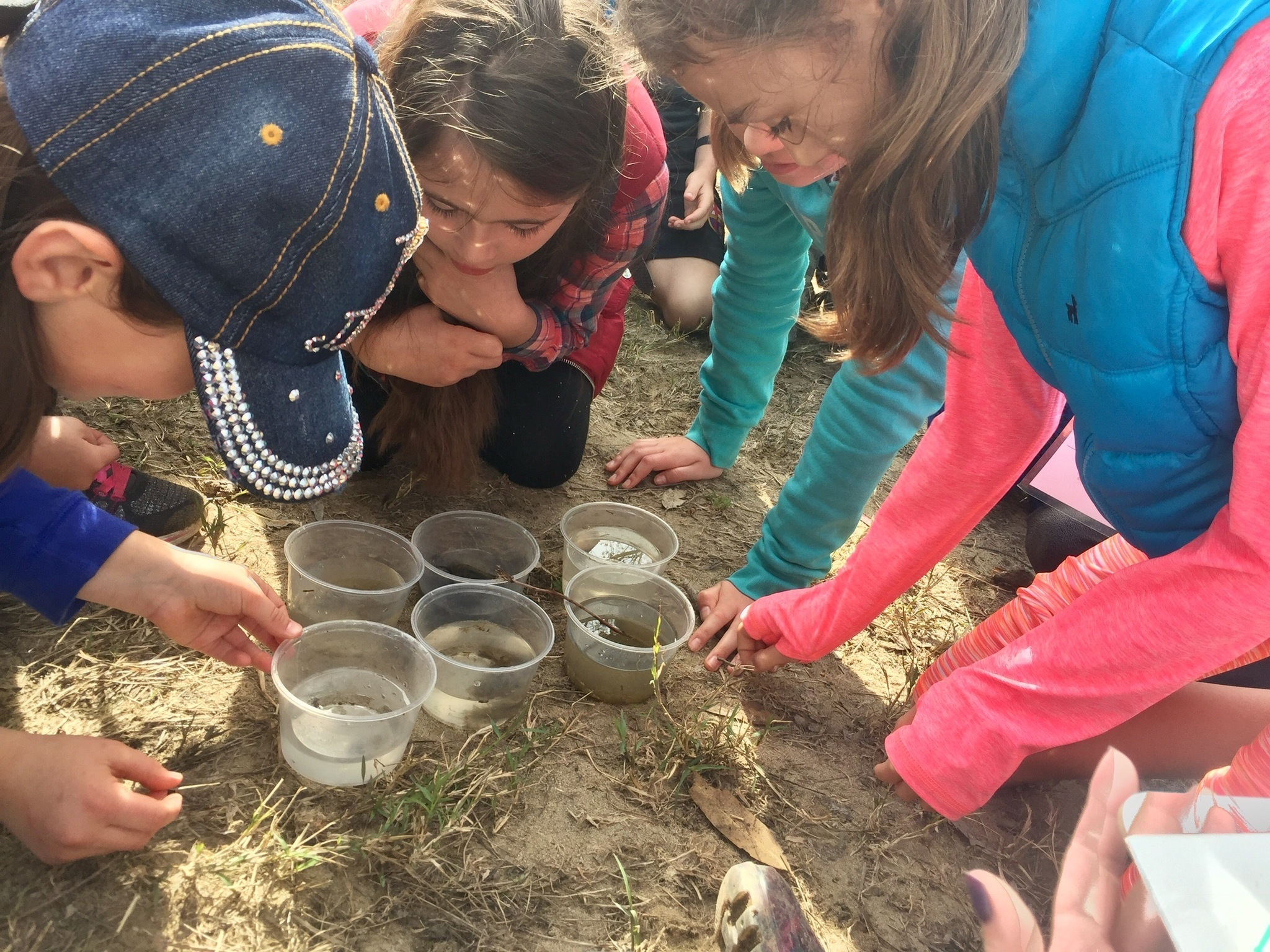
Sierra Nevada Journeys (SJN) program offers 5th grade students watershed science and storm water management using relevant and hands-on learning experiences both in the classroom and outdoors. During the 2017/18 fiscal year, the SNJ program received funding to transport 260 students to do a field study at William B. Pond where they learned how to assess water quality and the importance of keeping our local waterways clean.
University of California 4-H Youth Development Program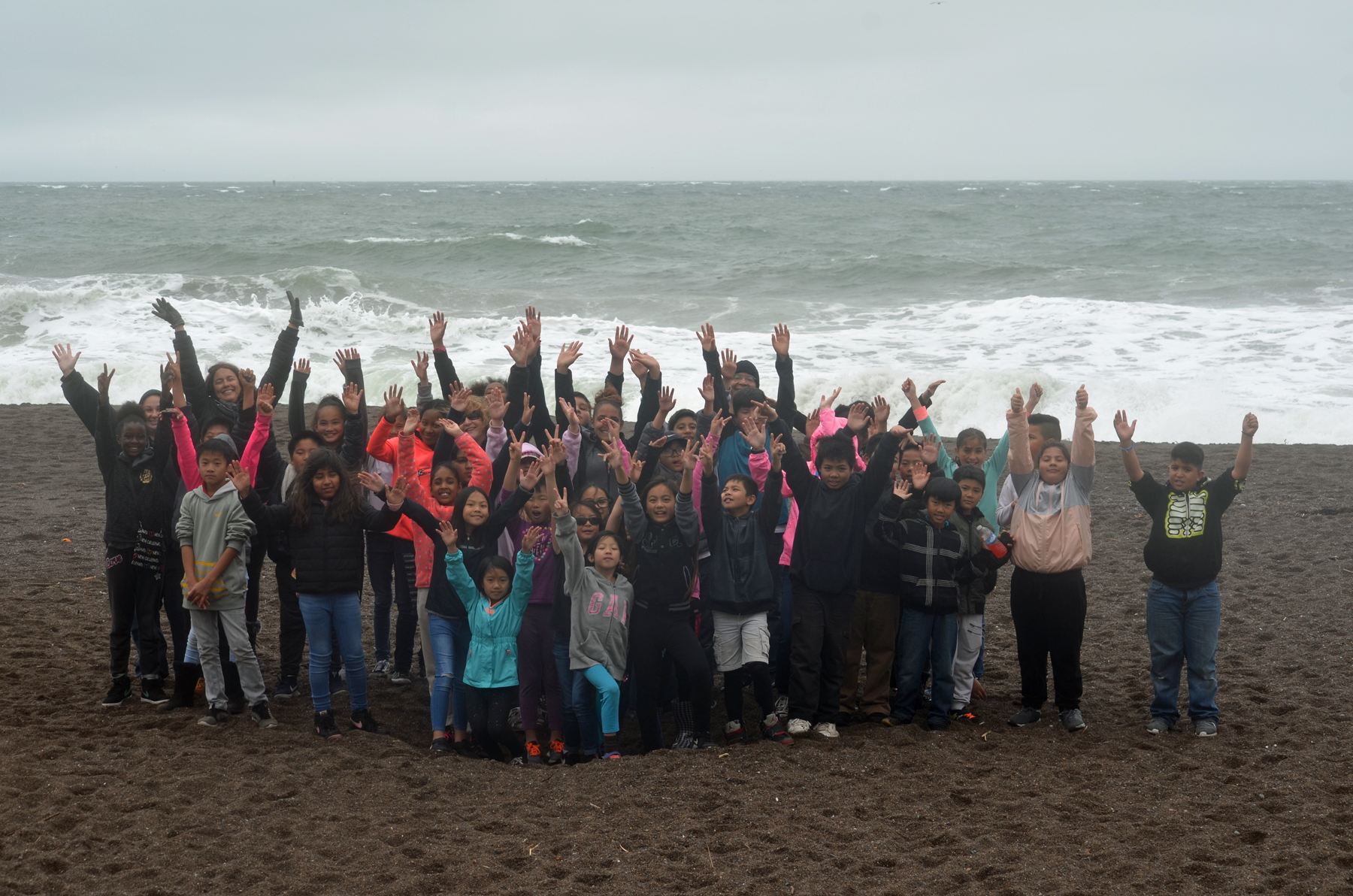
The UC 4-H Youth Development program offers a Water Wizards project which ties in with after school programs. Through the Water Wizards project, 4th-6th grade students participate in hands-on learning experiences that encourage inquiry, get involved in experiments that teach basic information about watersheds and water quality, and develop a sense of stewardship as they take action on a water issue in their community. During the 2017/18 fiscal year, the grant program provided funding so that 95 students from 3 after school programs were able to visit the Bay-Delta Model after completing the Water Wizards project. The field trip deepened their understanding of watersheds and delta issues and students gained a better appreciation of our natural resources.
Will Rogers Middle School
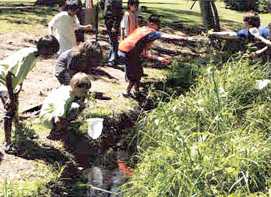
The students and teachers of Will Rogers Middle School participated in W.E.T. Water Education Training.
With their grant, the Will Rogers Middle School students were able to:
- identify and stencil storm drains on the school campus
- plant California Native plants
- construct a rainwater catchment system
- participate in field studies of the local watershed
- participate in water quality experiments
- attend field trips to local creeks and water educational centers
Read the
final report for more information about this project.
Leo. A Palmiter School
Kevin Jordan, the ROP Landscape Instructor at Leo Palmiter School, used the stormwater grant money to replace the conventional landscape at their school with River-Friendly Landscaping (RFL). Besides learning about RFL and it's contribution to improved stormwater quality, the students learned how to work as a team and how to overcome obstacles. Read the
final report for more information about this project.
Before and after photographs of an existing conventional lawn area that was replaced with River-Friendly Landscaping
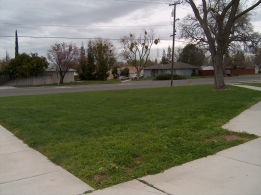
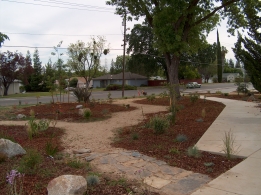
Global Youth Charter School

The Global Youth Charter School used their grant to map, research, and create marketing materials about Dry Creek.
The students first mapped Dry Creek and identified locations for research. Then they tested the water quality and studied the flora and fauna at the identified locations. The final phase of the project involved creating a
brochure and poster to education the community about Dry Creek.
Read the
final report for more information about this project.
Orange Grove Adult School
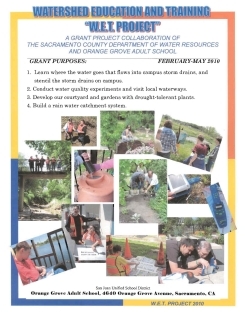
With their grant, the Orange Grove Adult School students were able to:
- identify and stencil storm drains on the Orange Grove campus
- create a W.E.T Project storm drain educational flyer
- plant
UCD Arboretum All Star California Native plants
- construct a rainwater catchment system
- participate in field studies of the local watershed
- participate in water quality experiments
- attend the Will Rogers Middle School Earth Day Celebration and the California Green Summit Expo
Read more about this project.
